Blog
What you need to know about… Generative AI
This blog will help you come off as a pseudo expert anytime AI comes up in conversation (which is all the time nowadays)
Param Gopalasamy
OneTrust Editorial Team, CIPP/E, CIPP/US, CIPM
November 3, 2023

In a digital tapestry, vibrant and infinite, where data weaves and dances, there exists a maestro known as generative AI. With strokes bold and subtle, it crafts, creates, and conjures images, sounds, and words that echo with the rhythm of invention.
Ugh. That statement was written by generative AI, and it clearly doesn’t mind talking itself up. The art analogy wasn’t bad though – we’ll stick with that throughout the article.
What is generative AI?
Generative AI is more than a digital assistant — it’s a digital artist. Unlike traditional AI, which analyzes data or predicts outcomes, generative AI can produce entirely new content: text, images, audio, code, and more. Think of it like a digital artist: its data is the paint, and its algorithms are the brushes.
What sets generative AI apart is its ability to generate something that didn’t previously exist. Where predictive AI might forecast the weather, generative AI goes a step further — suggesting what outfits to wear that week, summarizing your itinerary, or even writing the packing list.
In this blog, we’ll explore:
- The technical building blocks of generative AI
- Its most compelling use cases across industries
- How it’s reshaping the creative process
- And what the future of AI-powered content creation might look like
Whether you're just getting started or deep in the weeds, you're about to learn more about AI than you ever thought you needed — and why it matters now more than ever.
The evolution from predictive to generative AI
As we previously discussed, AI has been around in our lives for some time. Its previous avatar was predictive AI – which was widely used across industries and use cases. The name is a bit self-explanatory, which is … you guessed it, predicted things. In a nutshell, you give a predictive AI system a bunch of data, you’ll get a prediction on what’s going to happen next. Think stock markets, financial targets, the weather, even Netflix’s recommendations for you.
However, despite its prowess, Predictive AI’s canvas was only half-painted (bringing that art analogy back). It could analyze and predict, but when it came to creation, its hands were tied. Predictive AI could tell you the probability of rain tomorrow but couldn’t paint you a picture of the storm. And as someone who has interacted with ChatGPT quite a bit, let me tell you, generative AI has no problem painting a very verbose picture.
And so, last year, Generative AI made its entrance. Unlike its predictive counterpart, Generative AI doesn’t just analyze; it imagines and creates. It takes the baton from predictive models and runs forward, generating new data that is coherent and relevant (sometimes). There’s still some work to be done on the coherent and relevant part, as Google Bard’s public mishap was a clear sign to the world that we’re not quite there yet.
The leap from analysis to creation
This transition from predictive to generative AI represents a leap from understanding the world to adding something new to it. While Predictive AI might inform a doctor about a patient's likelihood of having a disease, Generative AI could assist in creating personalized treatment plans or even simulate the progression of the disease under different conditions.
Use cases at this level of significance are what’s driving the mass excitement (some may say hysteria) around Generative AI. Given the possibility of having an accurate AI system that can provide relevant, timely solutions to seemingly any problem – it's not too hard to see why the hype train has been rolling.
The building blocks of generative AI
This is the section where you can really differentiate yourself from standard “AI hype train person” to “Wow, they really know what they’re talking about!”.
If you want to know how generative AI models really work, there are three primary elements involved:
- GANs – Generative Adversarial Networks
- VAEs – Variable Auto-Encoders
- Transformer Models – No futuristic-sounding acronym here, although transformer sounds cool enough
When a prompt walks into an AI studio
Imagine you walk into an art studio (the generative AI system) with an idea or a request. It's like telling an artist, "Hey, I want something that looks like a sunset over a city." Let's see how the team of artists and storytellers – the GANs, VAEs, and Transformers – work together from that prompt:
Sketching with GANs
Your idea first goes to the GANs. As the name suggests, the Generative Adversarial Network consists of two entities:
- The Drawer (Generator) tries to sketch out a basic picture of a sunset over a city.
- The Checker (Discriminator) looks at it and suggests improvements. Maybe the colors need to be warmer, or the buildings need more detail.
After a few rounds of sketching and checking, the GANs come up with a detailed and beautiful sketch of the sunset scene.
Imagine coming up with some copy or a picture and having an annoying proofreader immediately correct you afterwards multiple times. That’s what this stage is (no wonder the potential of AI is said to be more than humans).
Sculpting with VAEs
Now that we have a sketch, the VAEs step in. They interpret this sketch and think about all the different ways it can be enhanced. Maybe they imagine 3D buildings popping out or the light of the sunset casting realistic shadows. Using their knowledge of data, they add depth and dimension to the scene, turning the flat sketch into something more lifelike.
This would be like an architect or sculptor taking a look at a sketch and coming up with ideas of how to bring it to life.
Storytelling with Transformers
With our image getting richer, the Transformers jump in. They want to add a narrative or a backstory. Why is the sunset important? Who lives in those buildings? Think of any marketing professional you know – and this step suddenly makes a lot more sense.
They craft a description or a story: "As the sun dipped below the horizon, the city's lights began to twinkle. Each window told a story, from the baker ending his day to a writer just beginning her novel under the warm glow of a lamp."
This final step is what adds context and the human-like element to generative AI.
These three elements together turn a simple prompt into cohesive instructions, descriptions, images, or more – as each layer continues to add depth to the AI system’s response.
The business use case for generative AI
Now in the business world, the term generative AI has reached “Payphone” by Maroon 5 levels of being overused and overplayed at this point. But as with “Payphone” (which was an absolute banger), it’s not without reason. Here are just a few use cases across different departments that are already starting to use generative AI effectively.
- Marketing: Need a tagline? How about 500? Or perhaps the old writers’ block has set in. You now have an outlet to draft that initial piece of content for you (definitely never used this myself).
- Design: Whoa that’s a cool logo. Well, it was AI generated. That’s going to happen more and more often, with a lot of corporate images that you see.
- Financial forecasting: What’s the next quarter gonna be bro? What are our targets bro? My impression of finance/sales bros asking an AI system these questions.
- Coding: As much as every coder loves troubleshooting bugs all day, sadly, they’ve got the option of an AI fixing it. Not that the purists will use it, I’m sure. Even generating new bits of code – turns out Skynet has you covered.
- Executive level: Executives, so busy. Who’s got time for paragraphs? Gotta get those meeting notes into five bullet points. Well, now you can with a simple prompt.
- Customer support: Ever heard of a chatbot? One that’s not useless and keeps giving you the same structured responses? We’re getting there. The AI voices on customer support phone lines are starting to get more intonation too. Scary.
Again, these are just a few of the applications in the business world that can currently be powered by AI. Presentations, social media, workplace productivity tools, and CRMs are also just a few more ways AI can take over our world.
Privacy and ethical concerns in generative AI
A big concern when it comes to generative AI is the privacy and ethical side of things.
- Who’s consented to using this data?
- Are they even in a position to give consent for this type of data use?
- How do we explain to people what the AI tool does with their data, so that they can understand?
- How can I get access to or delete my personal data that AI is (mis)using?
- Do original creators that AI pulls from get the proper credit?
- Is sensitive data at risk when it comes to AI systems?
- What happens when the AI system is just wrong? What are the repercussions of inaccurate answers?
- How can biases be handled in a fair way when it comes to AI?
These are just a few of the very real concerns that surface when it comes to generative AI in the realm of privacy and ethics. The three principles below can help you start to prioritize privacy when introducing AI solutions into your organization.
- Responsible data use: Consent, legitimate interest, or contract – depending on the use case of the AI system, your organization needs to understand what tools to rely on to use that data.
- Anonymized data: When using personal data in AI systems, making sure that this data is unidentifiable is one way to ensure that privacy is honored for your customers or users. Using synthetic data that’s computer-generated is another way to go about training your AI systems without putting personal data at risk.
- Privacy-first AI: Ensuring that a privacy framework is “baked in by design” into the AI system that your organization uses is key. Developing an AI system and processes and applying a privacy framework after the fact is always going to be tougher. Think of that idiom about putting toothpaste back in the tube.
Constructing ethical and privacy frameworks
For the canvas of your AI systems to have a place in your organization, they need to rest on an easel of ethical and privacy frameworks (this may be the last art analogy of the article).
Using the following ethical AI guidelines will help you address the primary ethical concerns that an AI system raises:
- Human oversight: Having a human-in-the-loop system where the final decision is not solely made by the AI goes a long way to preventing inaccurate, unfair decisions.
- Transparency: Communicate with your customers and users exactly what decisions the AI systems are used for to avoid any surprises.
- Privacy and data governance: Ensure all data being used by these systems is accurately classified and has the necessary protections in place based on sensitivity.
- Technical safeguards: When it comes to people’s data, your security measures need to be top of the line, meeting or exceeding the industry standards.
- Bias monitoring: When decisions are made by the AI system, ensure that biases are not creeping into the AI system, with regular feedback.
Just to make things easier for you in conversation, here’s a list of “AI don’ts” for you to spout off whenever the opportunity presents itself.
- Never share personal, sensitive, or confidential information with AI systems unless it’s approved by the InfoSec team and is an essential functionality of the system.
- Never rely solely on the outcomes that AI systems produce. Always review them, keeping the system’s limitations in mind.
- Never take AI system content as a substitute for legal, financial, or professional advice (or relationship advice - ever watched Her?).
- Never input information that you want to access, modify, or delete into an AI system.
- Never input hateful, offensive, malicious, misleading, or inappropriate information into AI systems.
So now that we’ve covered generative AI today, its building blocks, and concerns around it, hopefully, you’re a bit more qualified to hold a 5-minute discussion at any dinner table and come off as at least the second-most intelligent person there.
Time for a shameless plug: If you actually want to learn more about AI governance beyond sounding mildly informed over a meal – be sure to check out OneTrust AI Governance.
You may also like

On-Demand
AI Governance
Accelerate innovation with AI governance: A live demo
Join our live demo to see how OneTrust AI Governance helps you inventory and manage AI responsibly, with built-in privacy, risk, and ethical controls—integrated into your existing workflows.
December 11, 2025

On-Demand
Responsible AI
Future of Third-Party Risk Management: AI, Governance, and Strategic Transformation
Discover how AI, governance, and transformation frameworks are reshaping Third-Party Risk Management. Join OneTrust and Deloitte on Dec 9.
December 09, 2025

On-Demand
Defining an AI agent policy: Governing the next wave of intelligent systems
In this webinar, OneTrust AI Governance specialists will show how leading teams embed continuous risk reviews into design, development, and deployment so innovation doesn’t outpace oversight.
December 02, 2025

On-Demand
AI Governance
One nation, many rules: Governing AI in the US regulatory maze
In this session, OneTrust AI Governance and Privacy specialists will explore how privacy teams can leverage the lessons learned from years of privacy program building to prepare for this next wave of AI regulation.
November 19, 2025

Infographic
Consent & Preferences
What's changing in consent with AI
Download What’s Changing in Consent with AI to learn how AI transforms consent and governance, what new data risks to address, and how marketing and privacy teams can turn trust into a driver of responsible personalization and innovation.
November 13, 2025

Checklist
AI Governance
AI Readiness Checklist for Privacy Leaders Checklist
Download the AI Readiness Checklist for Privacy Leaders to assess your organization’s governance maturity, align privacy and data teams, and build trust in responsible AI adoption through transparency, accountability, and compliance.
November 10, 2025
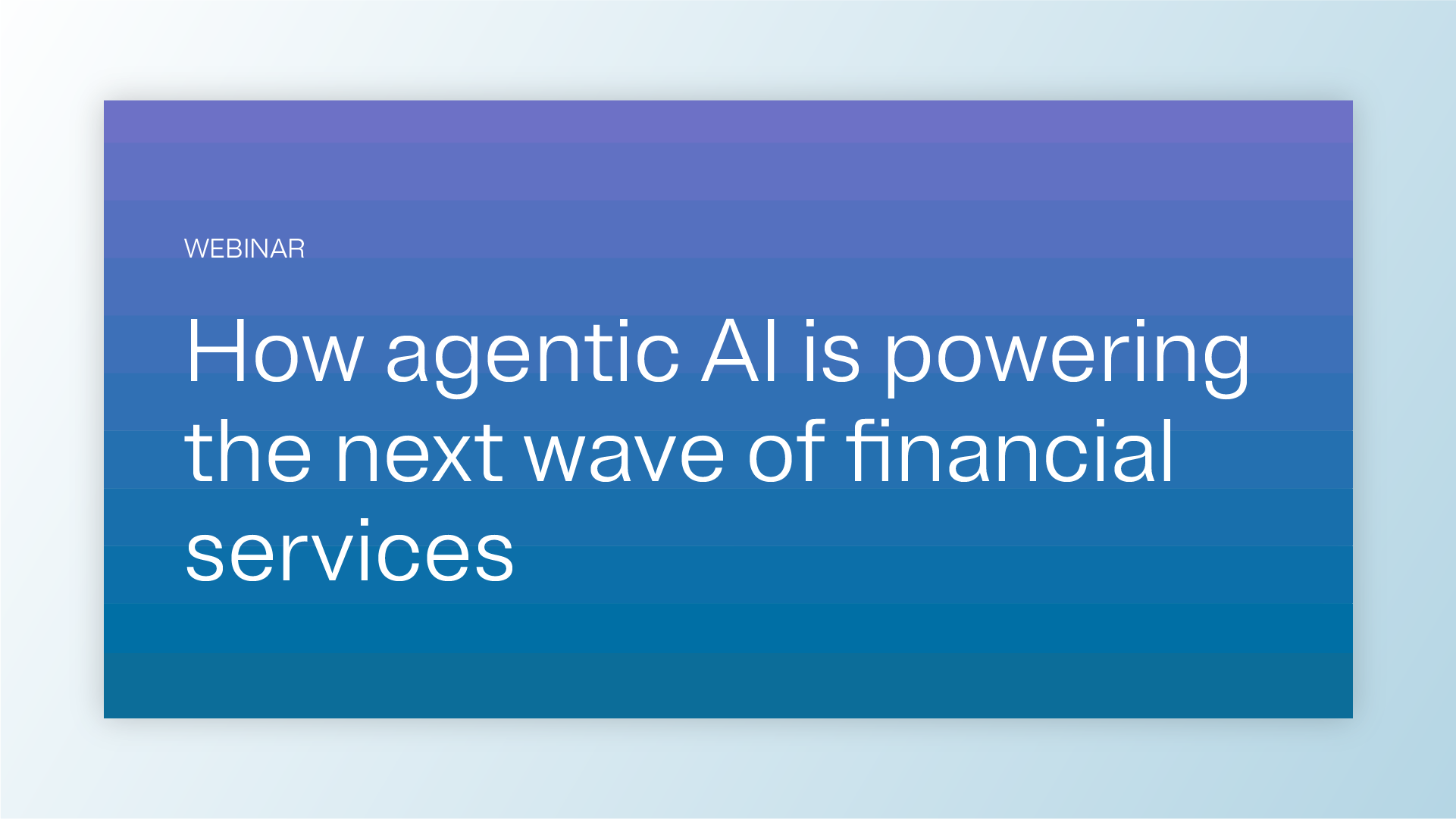
On-Demand
AI Governance
How agentic AI is powering the next wave of financial services innovation
This session will explore how distributed and democratized AI tools are unlocking new opportunities for innovation, while raising critical questions around governance, ethics, and trust.
November 05, 2025
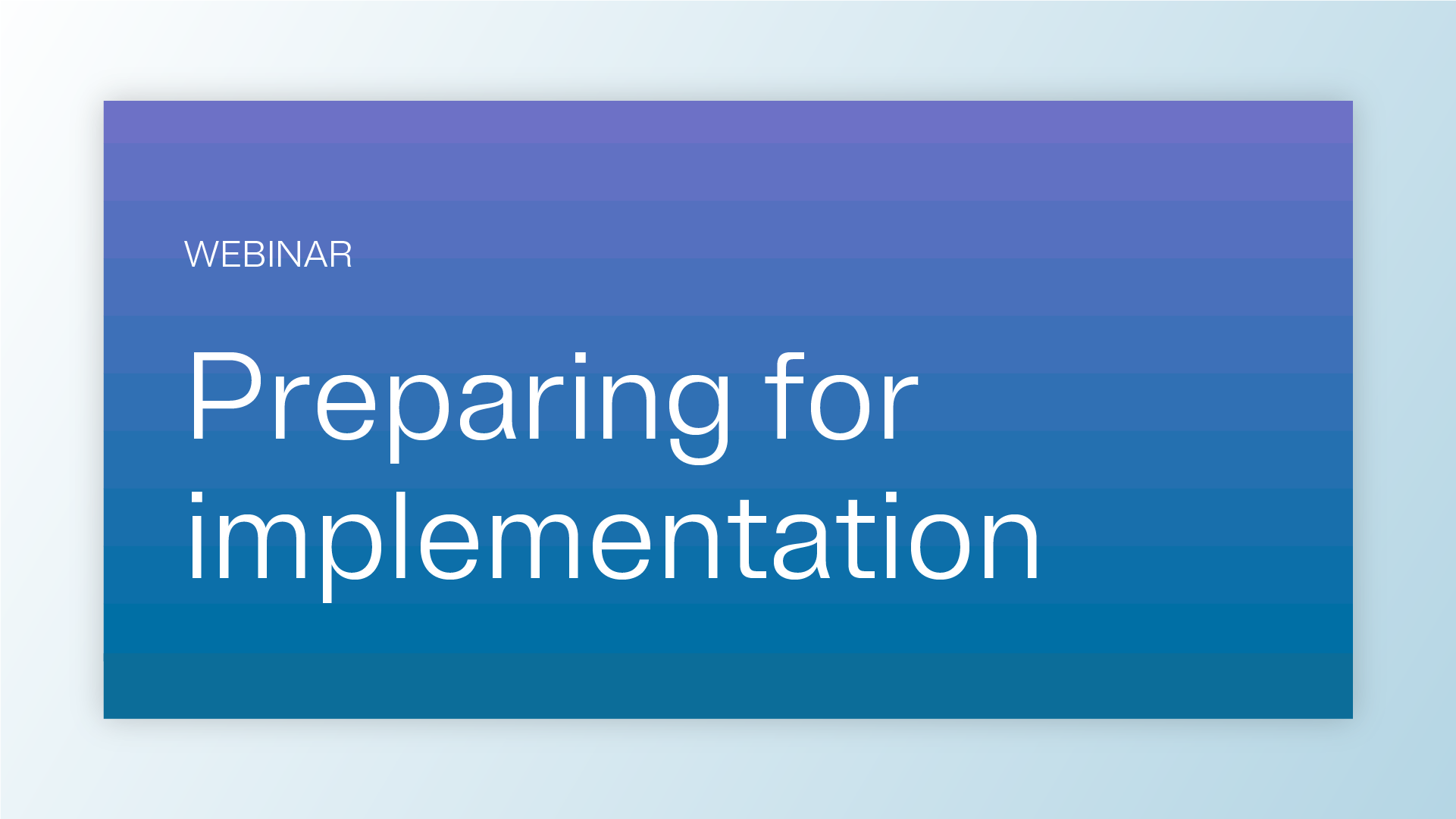
On-Demand
AI Governance
Preparing for implementation: Best practices to build your AI Governance tech stack
Accelerate AI governance deployment with expert tips. Learn to align with EU AI Act, ISO 42001 & NIST RMF. Get your roadmap to early success.
October 29, 2025
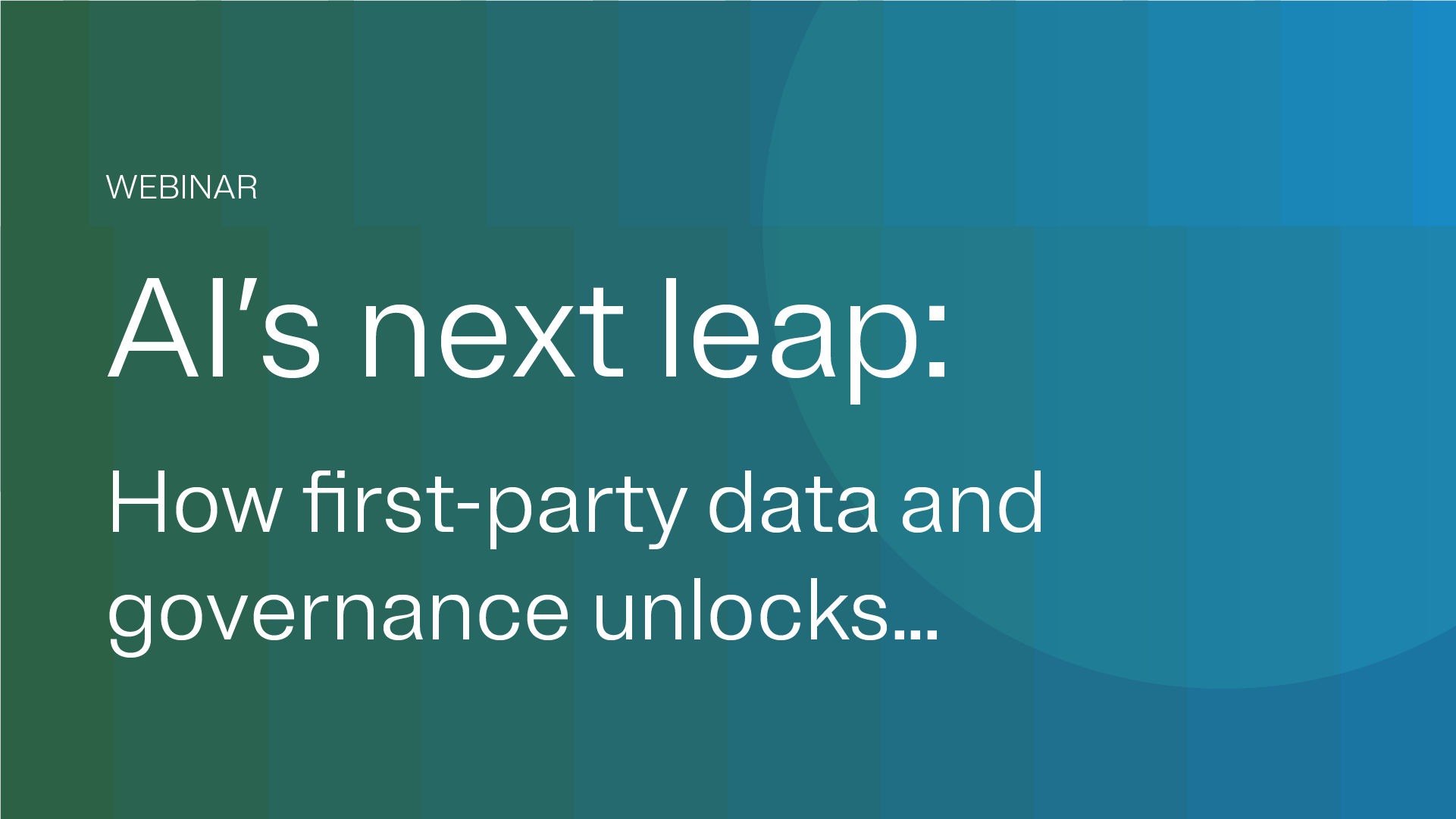
On-Demand
Responsible AI
AI’s next leap: How first-party data and governance unlock personalization at scale
Discover how first-party data and governance unlock AI-powered personalization, bridging the gap from pilots to full-scale media transformation.
October 20, 2025
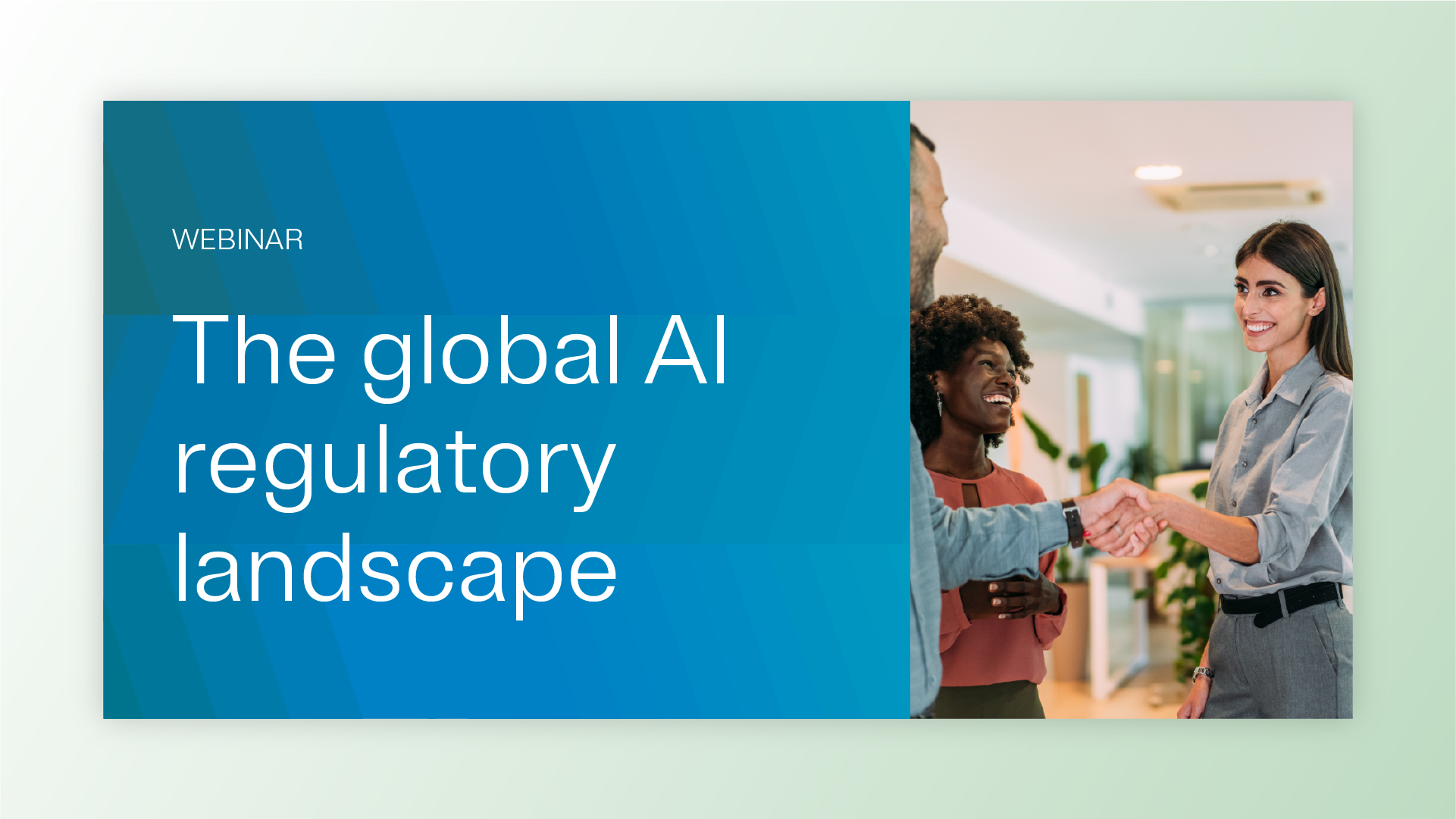
On-Demand
AI Governance
The global AI regulatory landscape: How privacy and compliance teams can stay ahead
This webinar will provide practical insights from the latest DataGuidance AI Report, helping you align AI practices with emerging standards and prepare for future regulatory scrutiny.
October 20, 2025

On-Demand
AI Governance
Operationalizing responsible AI with innovative governance: A live demo
In this demo webinar, you’ll see how OneTrust AI Governance orchestrates real-time oversight across the AI lifecycle—helping you manage risk, accelerate adoption, and align compliance without stalling innovation.
October 15, 2025

On-Demand
Privacy Automation
Global regulatory update: Q4 2025 privacy & data trends
Stay ahead of privacy and data protection in Q4 2025. Join OneTrust’s live update covering US state laws, EU AI Act readiness, children’s data, cross-border transfers, DORA, APAC trends, and key enforcement actions.
October 14, 2025

On-Demand
AI Governance
EU AI Act in force: Key impacts and what's next
Learn what’s now enforceable under the EU AI Act. Join our webinar for key insights on GPAI rules, GDPR overlap, and compliance strategies.
September 15, 2025

Report
AI Governance
The 2025 AI-Ready Governance Report
Across 1,250 IT leader responses, one theme stands out — legacy governance can’t keep up with AI. See how teams are shifting their mindset.
September 08, 2025

Infographic
AI Governance
The future of AI-ready governance
AI is exposing the gaps in traditional governances. While technology has evolved at lightning speed, the tools and frameworks we use to manage it haven’t kept up.
September 07, 2025

eBook
Consent & Preferences
Building trust in the AI age: A guide to consent, privacy, and first-party data excellence
Learn how to build trust in the AI era with consent-first, privacy-focused strategies that maximize first-party data and ensure compliance.
August 12, 2025

On-Demand
Responsible AI
Strengthening data governance to power responsible AI
Join our webinar to explore how data leaders are strengthening AI governance with trusted data foundations, quality management, and transparent practices.
August 05, 2025

eBook
AI Governance
Building a future-ready AI governance program: Best practices, proven frameworks, and expert insights for operationalizing responsible AI
Build a future-ready AI governance program with expert insights, proven frameworks, and actionable steps to operationalize responsible AI at scale.
July 25, 2025

On-Demand
AI Governance
Agentic AI: Navigating the tension between privacy and the next generation of AI
Explore the value, risks, and privacy implications of AI agents. Learn how they work, common myths, blind spots, and key concerns for privacy professionals.
July 25, 2025

On-Demand
AI Governance
OneTrust Using OneTrust: Managing AI
Our internal strategies for governing AI applications responsibly, ensuring ethical use and compliance.
July 02, 2025

On-Demand
Privacy Automation
Scaling privacy: Inside OneTrust’s AI agents and automation
Learn how OneTrust's latest AI innovations, including Privacy AI Agents, are enabling privacy teams to govern effectively and move quickly.
April 30, 2025

White Paper
Responsible AI
You can’t scale privacy without AI: Welcome to the new era of privacy management
Learn how AI agents are transforming privacy operations. Helping teams scale compliance, reduce manual work, and lead with confidence.
April 23, 2025

Report
AI Governance
State of data 2025: The now, the near, and the next evolution of AI for media campaigns
Discover how AI is transforming media campaigns. State of Data 2025 explores AI adoption, challenges, and strategies to optimize media planning and performance.
April 02, 2025

eBook
Responsible AI
Business rewards vs. security risks: A generative AI study
Download this study on Generative AI by OneTrust and ISMG and gain insights on how organizations are currently using AI and more.
March 11, 2025

Checklist
AI Governance
Essential checklist for responsible EU AI Act compliance
Download this EU AI Act checklist and gain insights on the Act's scope and methods in building a foundation for compliance.
February 13, 2025

On-Demand
AI Governance
Overcoming the privacy pitfalls of GenAI (APAC)
Join us and learn about the data privacy risks of adopting GenAI and practical strategies on avoiding them.
January 08, 2025
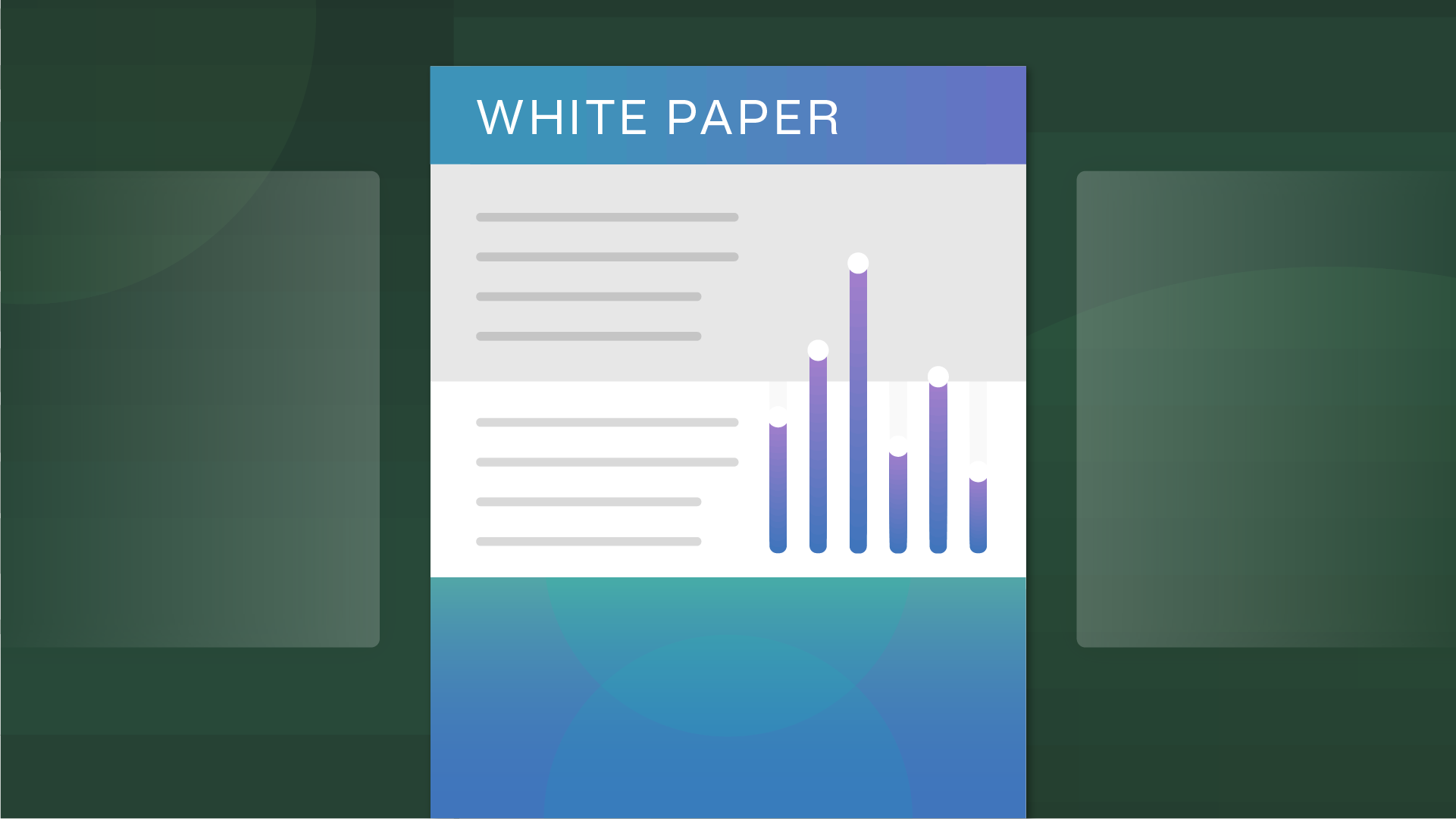
White Paper
AI Governance
Operationalizing the EU AI Act with OneTrust: A playbook for implementation
January 02, 2025

On-Demand
Responsible AI
Overcoming the privacy pitfalls of GenAI
This webinar will explore the key privacy pitfalls organizations face when implementing GenAI, focusing on purpose limitation, data proportionality, and business continuity.
December 10, 2024

Report
Responsible AI
Getting Ready for the EU AI Act, Phase 1: Discover & Catalog, The Gartner® Report
Getting Ready for the EU AI Act, Phase 1: Discover & Catalog, The Gartner® Report
October 16, 2024

On-Demand
AI Governance
California's approach to AI: Unpacking new legislation
This webinar unpacks California’s approach to AI and emerging legislations, including legislation on defining AI, AI transparency disclosures, the use of deepfakes, generative AI, and AI models.
October 15, 2024
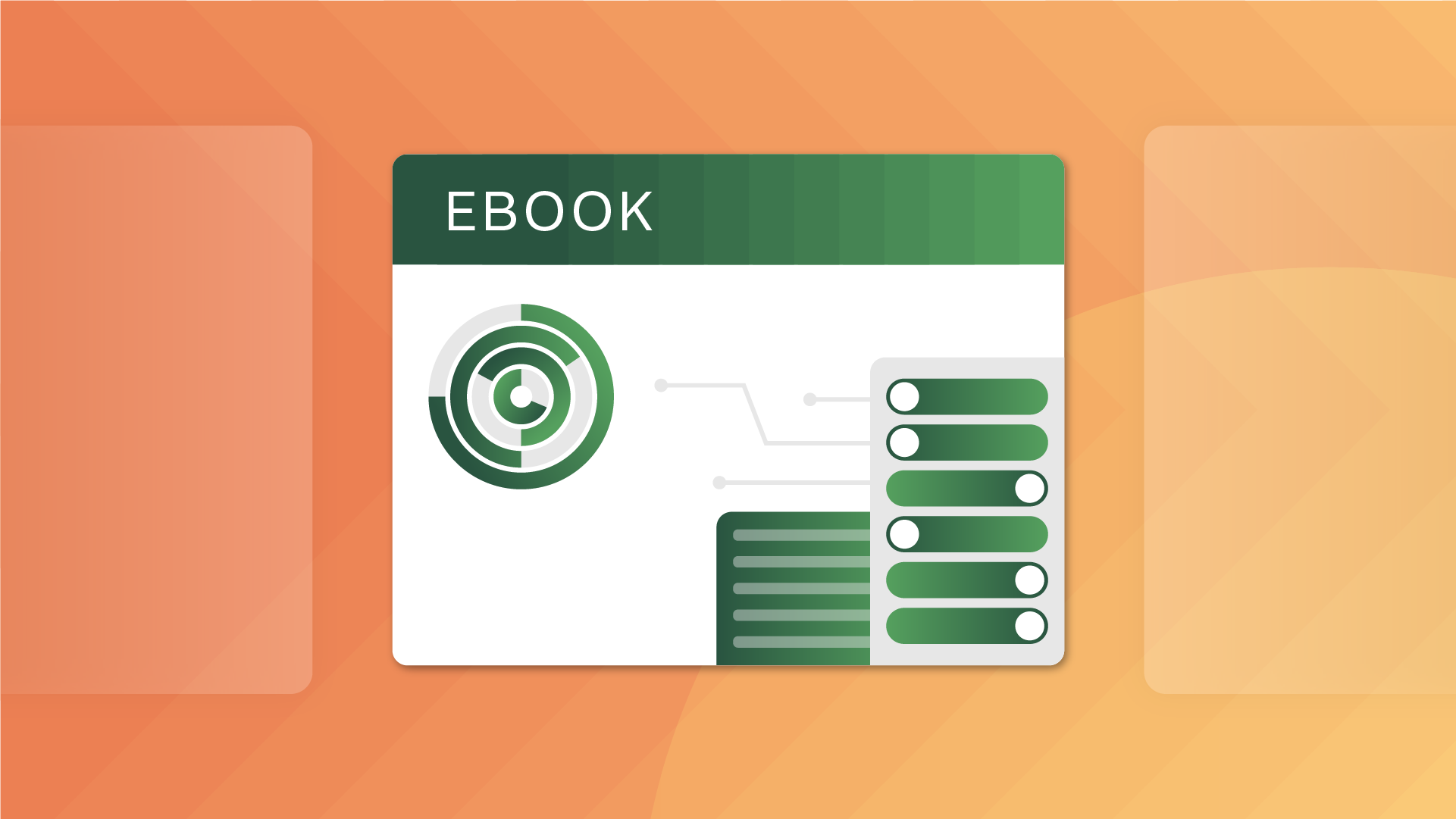
eBook
AI Governance
Securing reliable AI solutions: Strategies for trustworthy procurement
Download this eBook to explore strategies for trustworthy AI procurement and learn how to evaluate vendors, manage risks, and ensure transparency in AI adoption.
September 11, 2024

On-Demand
AI Governance
Ensuring compliance and operational readiness under the EU AI Act
Join our webinar and learn about the EU AI Act's enforcement requirements and practical strategies for achieving compliance and operational readiness.
August 22, 2024

Video
AI Governance
OneTrust AI Governance demo video
Learn how OneTrust AI Governance acts as a unified program center for AI initiatives so you can build and scale your AI governance program
August 12, 2024

On-Demand
AI Governance
AI governance masterclass miniseries: EU AI Act
Discover the EU AI Act's impact on your business with our video series on its scope, roles, and assessments for responsible AI governance and innovation.
July 31, 2024

On-Demand
Responsible AI
Privacy and AI: Bridging the divide
Watch this webinar for insights on ensuring responsible data use while building effective AI and privacy programs.
July 31, 2024

Resource Kit
Responsible AI
EU AI Act compliance resource kit
Download this resource kit to help you understand, navigate, and ensure compliance with the EU AI Act.
July 22, 2024

On-Demand
AI Governance
From build to buy: Exploring common approaches to governing AI
In this webinar, we'll navigate the intricate landscape of AI Governance, offering guidance for organizations whether they're developing proprietary AI systems or procuring third-party solutions.
July 10, 2024

eBook
AI Governance
Navigating the ISO 42001 framework
Discover the ISO 42001 framework for ethical AI use, risk management, transparency, and continuous improvement. Download our guide for practical implementation steps.
July 03, 2024

On-Demand
AI Governance
AI Governance Leadership Webinar: Best Practices from IAPP AIGG with KPMG
Join out webinar to hear about the challenges and solutions in AI governance as discussed at the IAPP conference, featuring insights and learnings from our industry thought leadership panel.
June 18, 2024

On-Demand
AI Governance
Colorado's Bill on AI: Protecting consumers in interactions with AI systems
Colorado has passed landmark legislation regulating the use of Artificial Intelligence (AI) Systems. In this webinar, our panel of experts will review best practices and practical recommendations for compliance with the new law.
June 11, 2024

On-Demand
AI Governance
Governing data for AI
In this webinar, we’ll break down the AI development lifecycle and the key considerations for teams innovating with AI and ML technologies.
June 04, 2024

Report
AI Governance
Global AI Governance law and policy: Jurisdiction overviews
In this 5-part regulatory article series, OneTrust sponsored the IAPP to uncover the legal frameworks, policies, and historical context pertinent to AI governance across five jurisdictions: Singapore, Canada, the U.K., the U.S., and the EU.
May 08, 2024

On-Demand
AI Governance
Embedding trust by design across the AI lifecycle
In this webinar, we’ll look at the AI development lifecycle and key considerations for governing each phase.
May 07, 2024

On-Demand
AI Governance
Navigating AI policy in the US: Insights on the OMB Announcement
This webinar will provide insights for navigating the pivotal intersection of the newly announced OMB Policy and the broader regulatory landscape shaping AI governance in the United States. Join us as we unpack the implications of this landmark policy on federal agencies and its ripple effects across the AI ecosystem.
April 18, 2024

On-Demand
AI Governance
Data privacy in the age of AI
In this webinar, we’ll discuss the evolution of privacy and data protection for AI technologies.
April 17, 2024

Resource Kit
AI Governance
OneTrust's journey to AI governance resource toolkit
What actually goes into setting up an AI governance program? Download this resource kit to learn how OneTrust is approaching our own AI governance, and our experience may help shape yours.
April 11, 2024

White Paper
AI Governance
Getting started with AI governance: Practical steps and strategies
Download this white paper to explore key drivers of AI and the challenges organizations face in navigating them, ultimately providing practical steps and strategies for setting up your AI governance program.
March 08, 2024

On-Demand
AI Governance
AI regulations in North America
In this webinar, we’ll discuss key updates and drivers for AI policy in the US; examining actions being taken by the White House, FTC, NIST, and the individual states.
March 05, 2024

In-Person Event
Responsible AI
Data Dialogues: Implementing Responsible AI
Learn how privacy, GRC, and data professionals can assess AI risk, ensure transparency, and enhance explainability in the deployment of AI and ML technologies.
February 23, 2024

On-Demand
AI Governance
Global trends shaping the AI landscape: What to expect
In this webinar, OneTrust DataGuidance and experts will examine global developments related to AI, highlighting key regulatory trends and themes that can be expected in 2024.
February 13, 2024

On-Demand
AI Governance
The EU AI Act
In this webinar, we’ll break down the four levels of AI risk under the AI Act, discuss legal requirements for deployers and providers of AI systems, and so much more.
February 06, 2024

On-Demand
Responsible AI
Preparing for the EU AI Act: Part 2
Join Sidley and OneTrust DataGuidance for a reactionary webinar to unpack the recently published, near-final text of the EU AI Act.
February 05, 2024

On-Demand
Privacy Management
Data Privacy Day 2024: Reflecting on the past year and anticipating the next
Join our panel of expert privacy professionals as they dissect the key happenings in 2023 and how privacy professionals can approach what may occur in 2024.
January 31, 2024

On-Demand
AI Governance
Getting started with AI Governance
In this webinar we’ll look at the AI Governance landscape, key trends and challenges, and preview topics we’ll dive into throughout this masterclass.
January 16, 2024

On-Demand
AI Governance
First Annual Generative AI Survey: Business Rewards vs. Security Risks Panel Discussion
OneTrust sponsored the first annual Generative AI survey, published by ISMG, and this webinar breaks down the key findings of the survey’s results.
January 12, 2024

Report
AI Governance
ISMG's First annual generative AI study - Business rewards vs. security risks: Research report
OneTrust sponsored the first annual ISMG generative AI survey: Business rewards vs. security risks.
January 04, 2024

On-Demand
AI Governance
Building your AI inventory: Strategies for evolving privacy and risk management programs
In this webinar, we’ll talk about setting up an AI registry, assessing AI systems and their components for risk, and unpack strategies to avoid the pitfalls of repurposing records of processing to manage AI systems and address their unique risks.
December 19, 2023

White Paper
Responsible AI
EU AI Act Conformity Assessment: A step-by-step guide
Conformity Assessments are a key and overarching accountability tool introduced by the EU AI Act. Download the guide to learn more about the Act, Conformity Assessments, and how to perform one.
November 17, 2023

Infographic
Responsible AI
EU AI Act Conformity Assessment: A step-by-step guide
A Conformity Assessment is the process of verifying and/or demonstrating that a “high- risk AI system” complies with the requirements of the EU AI Act. Download the infographic for a step-by-step guide to perform one.
November 17, 2023

eBook
AI Governance
Navigating the EU AI Act
With the use of AI proliferating at an exponential rate, the EU rolled out a comprehensive, industry-agnostic regulation that looks to minimize AI’s risk while maximizing its potential.
November 17, 2023

On-Demand
Responsible AI
OneTrust AI Governance: Championing responsible AI adoption begins here
Join this webinar demonstrating how OneTrust AI Governance can equip your organization to manage AI systems and mitigate risk to demonstrate trust.
November 14, 2023

White Paper
AI Governance
AI playbook: An actionable guide
What are your obligations as a business when it comes to AI? Are you using it responsibly? Learn more about how to go about establishing an AI governance team.
October 31, 2023

On-Demand
The Shifting US Privacy Landscape: Lessons learned from enforcement actions and emerging trends
Stay ahead of US privacy laws as we explore the lessons learned from CCPA and FTC enforcement and how AI is effecting the regulatory landscape.
October 12, 2023

Infographic
AI Governance
The Road to AI Governance: How to get started
AI Governance is a huge initiative to get started with for your organization. From data mapping your AI inventory to revising assessments of AI systems, put your team in a position to ensure responsible AI use across all departments.
October 06, 2023

White Paper
AI Governance
How to develop an AI governance program
Download this white paper to learn how your organization can develop an AI governance team to carry out responsible AI use in all use cases.
October 06, 2023

eBook
Responsible AI
AI Chatbots: Your questions answered
We answer your questions about AI and chatbot privacy concerns and how it is changing the global regulatory landscape.
August 08, 2023

Webinar
Responsible AI
Unpacking the EU AI Act and its impact on the UK
Prepare your business for EU AI Act and its impact on the UK with this expert webinar. We explore the Act's key points and requirements, building an AI compliance program, and staying ahead of the rapidly changing AI regulatory landscape.
July 12, 2023

On-Demand
AI Governance
The EU's AI Act and developing an AI compliance program
Join Sidley and OneTrust DataGuidence as we discuss the proposed EU AI Act, the systems and organizations that it covers, and how to stay ahead of upcoming AI regulations.
May 30, 2023

White Paper
AI Governance
Data protection and fairness in AI-driven automated data processing applications: A regulatory overview
With AI systems impacting our lives more than ever before, it's crucial that businesses understand their legal obligations and responsible AI practices.
May 15, 2023

White Paper
AI Governance
Navigating responsible AI: A privacy professional's guide
Download our white paper and learn how privacy teams help organizations establish and implement policies that ensure AI applications are responsible and ethical.
May 03, 2023

On-Demand
AI Governance
AI regulation in the UK – The current state of play
Join OneTrust and their panel of experts as they explore Artificial Intelligence regulation within the UK, sharing invaluable insights into where we are and what’s to come.
March 20, 2023

Webinar
AI Governance
AI governance masterclass
Navigate global AI regulations and identify strategic steps to operationalize compliance with the AI governance masterclass series.

Regulation Book
AI Governance
AI Governance: A consolidated reference
Download this reference book and have foundational AI governance documents at your fingertips as you position your organization to meet emerging AI regulations and guidelines.
